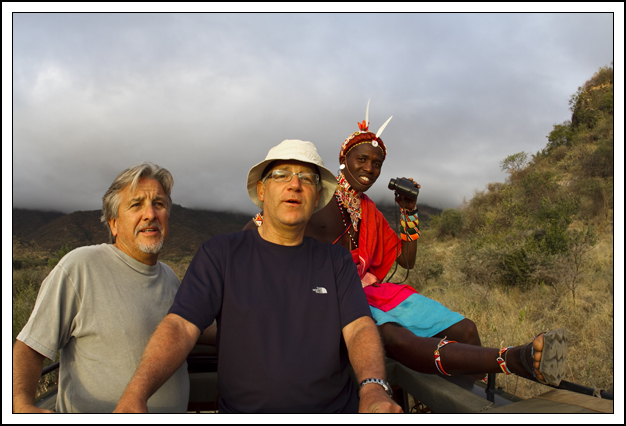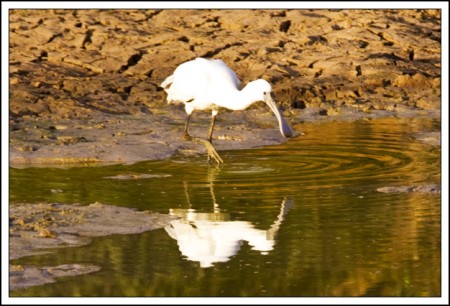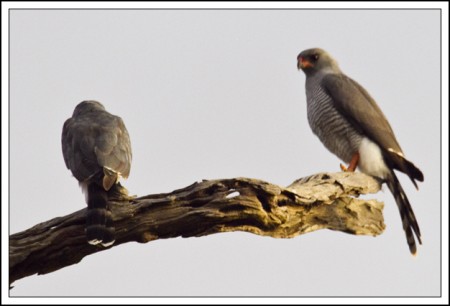Being so close to the equator, we get 12 hours of light and 12 hours of darkness at Sarara. Actually, that’s not perfectly true. Last night the sun set at 6:36 and this morning it came up at 6:28. So night is eight minutes longer this time of year.
Mornings are the best here. I am awake even before I hear the soft shuffle of the mess tent waiter bringing us our tea. I lie in bed, watching the “hills where the child got lost” slowly brighten, listening to the bundu come alive, the unseen dudus chirping, clicking, humming, and always the soft, sad coo of the mourning dove.
There are so many different birds living in these mountains. Calvin says probably 500 species or so. This morning when we went out game watching, ostensibly in search of some Grevy’s zebras, which I’ve yet to spot, we ended up spending most of our time staring at birds. In fact, I think Fletcher is turning into an ornithologist. He and our Samburu guide, Phillip, sat on top of the Land Cruiser studying an African bird book and giving out tidbits of information as we came across tawny eagles and pygmy falcons, starlings and weavers.
“Wacha!” Phillip would yell to Reuben, our driver, and everyone would be thrown forward in their seat as the four-wheel-drive came to an abrupt halt because he’d spotted an ndege in a dead tree or scurrying through the bush or circling in the thermals.
Then Fletch would read to us from his well-worn guide: “African spoonbill. A bird with pure white plumage. The most obvious identification feature is the large spoon-like pink and grey bill which is used in a sweeping motion when feeding.”
And then we’d sit there for hours—okay, not quite hours but for a long time—watching our spoonbill sweep the muddy waterhole with his pink and grey bill, just like the guidebook said it would.
Eventually we’d move on. Until Phillip yelled “Tai!” again and pointed at a dead tree where a pair of goshawks were perched.
“Eastern pale chanting goshawk,” Fletcher read. “Often seen in the early morning hunting from favored perches.”
We all looked up at the goshawks sitting on a favored perch, just like the guidebook said. It was uncanny.
“They feed on lizards, insects, small mammals and birds ranging from small passerines to francolins.”
We all searched the ground beneath the dead tree looking for lizards, insects, or small mammals. I would have looked for a passerine but I didn’t know what that was and I was afraid to ask Fletcher for fear we’d be here for another twenty minutes.
“Wow,” said Fletcher. He and the Samburu guide studied the book together, looking at the photo of the goshawk in the book, then at the bird in the dead tree, back to the book. This went on for quite awhile.
We saw a bateleur eagle and augur buzzards, sandgrouse and guinea fowl (both helmeted and vulturine) by the dozens, a harrier hawk, and lots of go-away birds. But no Grevy’s zebra. We just didn’t have time.
“Maybe this afternoon,” said Phillip as we headed back to camp.
Maybe. If we don’t have to stop to look at all of the birds.
Tags: Sarara
-
no wondering where nick gets his interest in wildlife… the apple dont fall far from the tree. good news for all of us. hopefully he can save us a few fisheries down the line when he’s done with school.
Comments are now closed.




2 comments